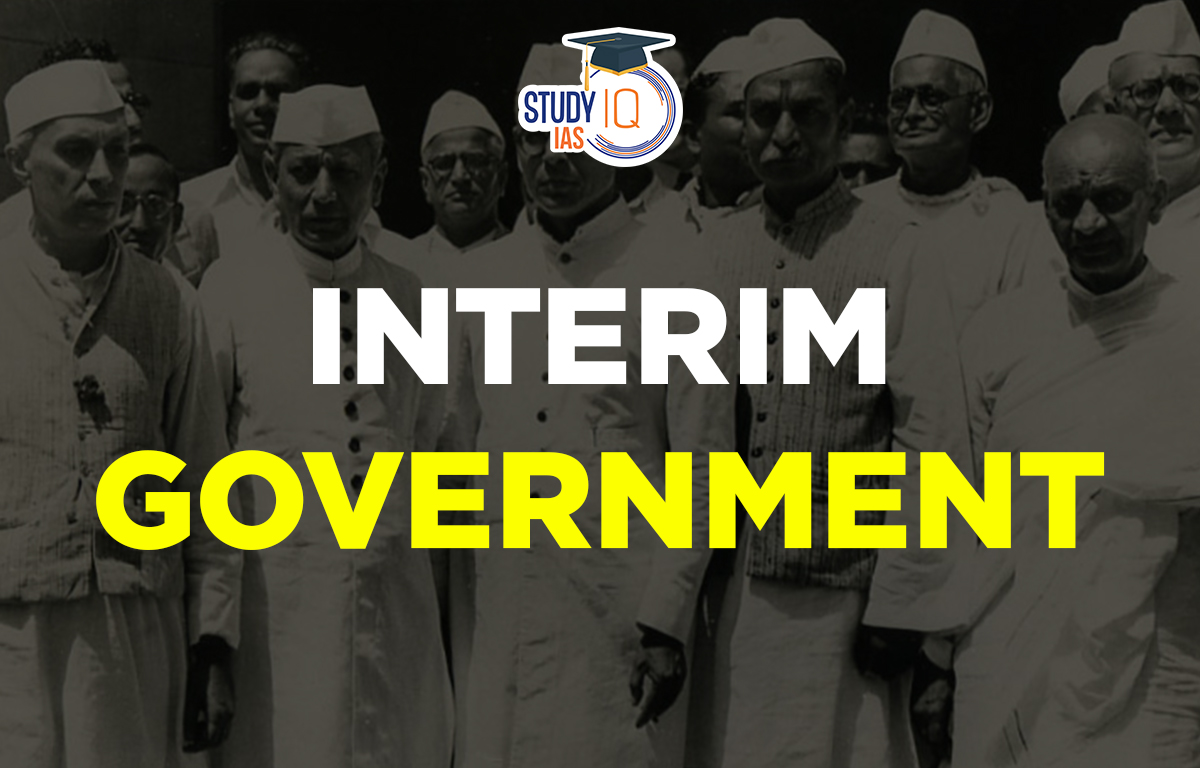Table of Contents
Interim Government
It was the only cabinet of its kind in India’s history where the Muslim League and the Congress shared authority at the national level. The interim administration had a large deal of autonomy and held onto power until the end of British rule, when the Dominions of India and Pakistan took over. In India’s modern past, this is a crucial chapter. For more details on this part of Indian history for the UPSC exam read this article.
Read about: Tebhaga Movement
Interim Government History
Between an imperial structure and a democracy structure, the Interim Government was established as a temporary administration. It continued until August 15, 1947, when India attained independence and was divided into Pakistan and India. This interim administration was established from the newly elected National Assembly in August 1946.
Representatives were chosen by the provincial legislatures in a non-direct election for the Constituent Assembly. The Indian National Congress (INC) obtained a plurality in these elections by winning about 69% of the seats. The Muslim League won 73 seats, while the Congress Party took 208. In the Interim Government, the Council of Ministers, which served as the administrative branch, was replaced by the Viceroy’s Executive Council.
Its Vice President and de facto Prime Minister was Pundit Jawaharlal Nehru. Despite the Muslim League’s initial opposition to the Interim Government and insistence on its demand for a separate country, it ultimately joined it. The League was “entering the Interim Government to get a foothold to fight for… the cherished objective of Pakistan,” in Muhammad Ali Jinnah’s words.
Read about: Communist Movement in India
Interim Government Formation
The Second World War had an impact on the creation of the interim administration. After the Second World War, a turning moment occurred when all political prisoners who had been associated with the Quit India movement were freed. By announcing its involvement in the creation of the Constituent Assembly, the Indian National Congress set the groundwork. The 1946 Cabinet Mission was sent to India by Clement Attlee’s freshly elected government to make recommendations for the creation of a government that would result in the independence of India.
Interim Government Members
The Cabinet of the Interim Government of India was composed of the following members given below in the list:
| Pt. Jawaharlal Nehru | Vice President of the Executive Council, External Affairs and Commonwealth Relations |
| Vallabhbhai Patel | Home, Information and Broadcasting |
| Baldev Singh | Defence |
| Dr. John Mithai | Industries and supplies |
| C. Rajagopalachari | Education |
| C.H Bhabha | Works, Mines and Power |
| Rajendra Prasad | Food and Agriculture |
| Asaf Ali | Railways |
| Jagjivan Ram | Labour |
| Liaqat Ali | Finance |
| TT Chundrigar | Commerce |
| Abdur Rab Nistar | Communication |
| Gazanfar Ali khan | Health |
| Jogendra Nath Mandal | Law |
Read about: Indian National Army
Interim Government UPSC
The British government dispatched the Ministerial Mission in 1946 from London to assist in forming the temporary administration. Until a new government was established on August 15, 1947, the Interim Government was in place. Nehru was appointed India’s prime minister. This document contains all the information you need to know about interim government for the UPSC exam.


 Story of Meera Bai and Her Devotion For ...
Story of Meera Bai and Her Devotion For ...
 Desert Climate, Distribution, Climatic C...
Desert Climate, Distribution, Climatic C...
 Deserts of India Map, Features of Thar D...
Deserts of India Map, Features of Thar D...





















